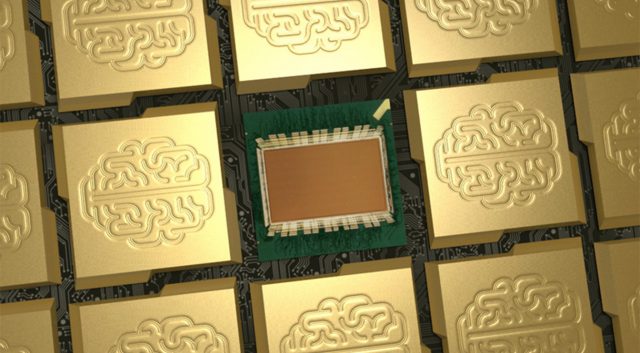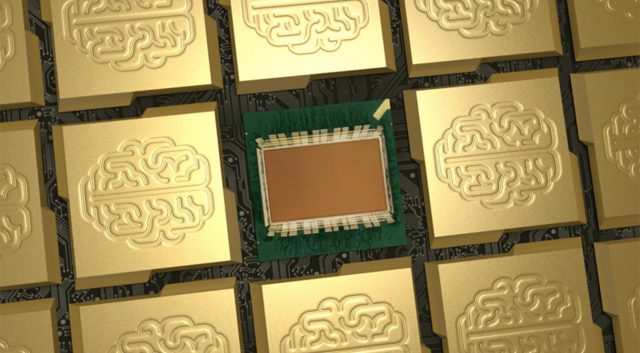 MIT Researchers Say New Chip Design Takes Us Closer To Computers That Work Like Our Brains
MIT Researchers Say New Chip Design Takes Us Closer To Computers That Work Like Our Brains
New designs for ‘neuromorphic’ processors could mean faster, cheaper AI
This is called “neuromorphic computing,” and scientists from MIT this week said they’ve made significant progress in getting this new breed of chips up and running. Their research, published in the journal Nature Materials, could eventually lead to processors that run machine learning tasks with lower energy demands — up to 1,000 times less. This would enable us to give more devices AI abilities like voice and image recognition.
To understand what these researchers have done, you need to know a little about neuromorphic chips. The key difference between these processors and the ones used in your computer is that they process data in an analog, rather than a digital fashion. This means that instead of sending information in a series of on / off electrical bursts, they vary the intensity of these signals — just like our brain’s synapses do.
This means that more information can be packed into each jolt, drastically reducing the amount of power needed. It’s like the difference between morse code and speech. The former encodes data using just two outputs, dots, and dashes — making meanings easy to understand but lengthy to communicate. Speech, by comparison, can be difficult to interpret (think fuzzy phone lines and noisy cafes) but each individual utterance holds much more data.
A big difficulty with building neuromorphic chips, though, is being able to precisely control these analog signals. Their intensity needs to vary, yes, but in a controlled and consistent fashion.
“This is the most uniform device we could achieve, which is the key to demonstrating artificial neural networks,” Kim told MIT News.
To test this premise, Kim and his team created a simulation of their new chip design, with the same degree of variance in signals. Using it, they were able to train a neural network that could recognize handwriting (a standard training task for new forms of AI) with 95 percent accuracy. That’s less than the 97 percent baseline using existing algorithms and chips, but it’s promising for new technology.
There’s a long way to go before we’ll know whether neuromorphic chips are suitable for mass production and real-world usage. But when you’re trying to redesign how computers think from the ground up you have to put in a lot of work. Making sure neuromorphic chips are firing their electric synapses in order is just the start.
Source: The Verge


 MIT Researchers Say New Chip Design Takes Us Closer To Computers That Work Like Our Brains
MIT Researchers Say New Chip Design Takes Us Closer To Computers That Work Like Our Brains